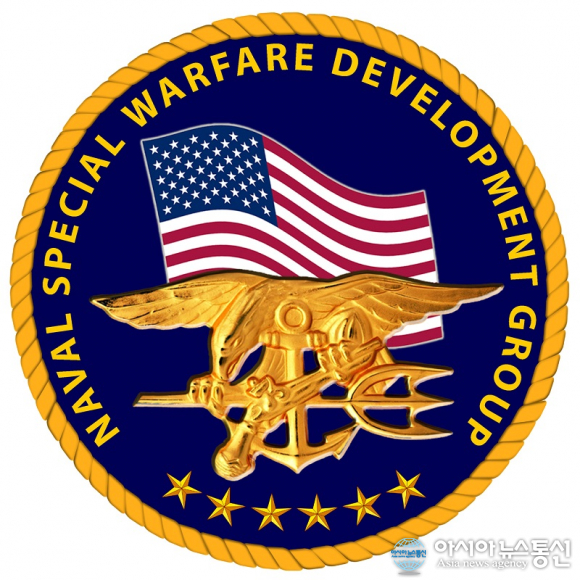 |
| Photo by: Roque Wicker / Wikimedia Commons |
Operation Neptune Spear was remembered by many as the operation that caused Osama bin Laden's death on May 2, 2011. The operation was conducted by the Central Intelligence Agency (CIA), along with the Joint Special Operations Command (JSOC), who was in charge of coordinating the Special Mission Units (SMUs) involved in the operation. Among these units was the US.Naval Special Warfare Development Group, which was also known for their two aliases, DEVGRU and SEAL Team Six.
SEAL Team Six, along with the Delta Force, is one of SMUs assigned to initiate direct action under JSOC's command.
Rising from failure's ashes
In 1979, Richard Marcinko was one of the US Navy representatives for the Terrorist Action Team (TAT) task force, assigned with creating a plan to free American hostages held in Iran. This plan will be remembered by many as Operation Eagle Claw. Eagle Claw's disaster at Iran's Desert One base made the Navy realize the need to establish a full-time counter-terrorism unit, and they assigned Marcinko for the task at hand.
Marcinko became the unit's first commanding officer, and his purpose of naming the unit was to confuse Soviet intelligence about the number of active SEAL teams at that time. He also chose the unit's founding members from the UDT/SEAL community. Under his guidance, SEAL Team Six was established as US Navy's counter-terrorist unit, and it has been likened to the US Army's Delta Force. Marcinko would spearhead the unit for three years.
October 1980 saw the formal establishment of the SEAL Team Six, and it was mission-ready six months after, thanks to an intense and progressive training regimen.
Seven years later, SEAL Team Six was disbanded and the "Naval Special Warfare Development Group" was established. However, this unit is still being referred to by its predecessor's name.
Separating the men from the boys
During Six's embryonic stage, Marcinko was given six months to make the unit operational, or face disbandment. In response to the deadline, he selected the unit's founding members with their Navy records as his basis. There are reports that Marcinko regretted not having the time to establish a proper selection procedure.
The application requirements were as follows:
- Male
- coming from SEAL Delivery Vehicle (SDV) teams, Navy explosive ordinance disposal teams (EODs), and East and West Coast SEAL Teams
- 21 years or older, and
- have at least served two combat tours on their previous assignments.
Combat experience has been the top of Marcinko's criteria so that he can determine if applicants can function under fire. Language skills are a key asset since they will be communicating with the local population in their future operations. Union skills, meanwhile, are the ability to blend in as civilians. SEAL skills would be the last criteria.
Candidates must pass three days of physical and psychological tests, that featured a Physical Screening Test (PST) which will require them to surpass the minimum requirements and perform at their very best. An oral interview is conducted to determine if the candidate is worthy of being selected. Passing both procedures will enable candidates to attend an Operators Training Course that can last from six to eight months.
The said training course is also notorious for its 50 percent attrition rate. In one occasion, 12 out of the original 20 candidates were able to pass to complete the course. DEVGRU instructors evaluate the aspirants by watching them closely in order to determine if they will make the cut.
Howard E. Wasdin, a former SEAL Team Six operative, recalled that only two out of the 16 aspirants made the cut to become SEAL Team Six operatives one time.
SEAL Team Six is also notorious for fatalities that occured during training due to its intensive and high risk regimens, making applicants susceptible to serious injuries and deaths. There are claims that the Six's assessment process is a different story compared to what a SEAL operator underwent in his previous career.
Civilian or military instructors facilitate the many advanced training courses, such as free-climbing, land warfare, communications, advanced unarmed combat techniques, defensive and offensive advanced driving, advanced diving, and Survival, Evasion, Resistance and Escape (SERE) training.
Unlike regular SEAL Teams, Six operatives are able to attend any other military course to further up their repertoire based on the unit's requirements.
Much like their Delta Force brothers, SEAL Team Six conducts live fire marksmanship drills using live ammunition in both long range and close quarters battle (CQB). These drills were also done with other students portraying hostage roles in an effort to establish trust between candidates.
Tasks at hand
SEAL Team Six was entirely devoted to counter-terrorism operations, while small teams from the Six were assigned with espionage operations that involve reconnaissance work.
In the process, the SEAL Team Six transformed into a multi-functional special operations unit that has various tasks to perform such as high-risk personnel/hostage extractions from Jessica Buchanan to Jean-Bertrand Aristide.
Perhaps the most famous operation that the team was involved was Operation Neptune Spear, an operation that lead to Osama Bin Laden's death, prompting former US President Barack Obama to say the famous words, "We got him."
Under the radar
In a New York Times article, SEAL Team 6: A Secret History of Quiet Killings and Blurred Lines, almost everything about the unit is confidential to the point that the Pentagon refuses to publicly recognize the name.
The article said that the team executed missions elsewhere that obscure the fundamental lines between a soldier and a spy. The team was also credited for performing multiple dangerous raids that military leaders acknowledge for crippling militant networks.

